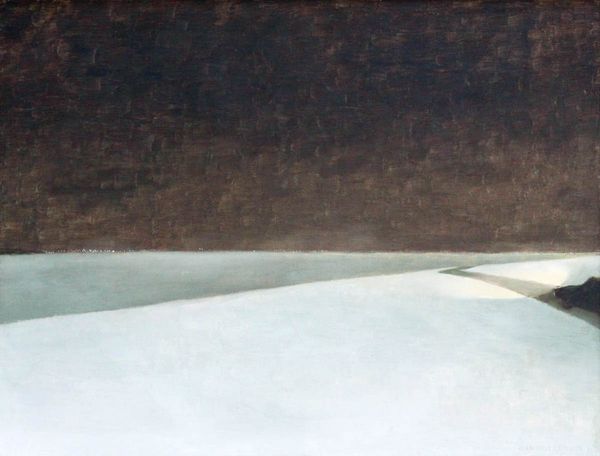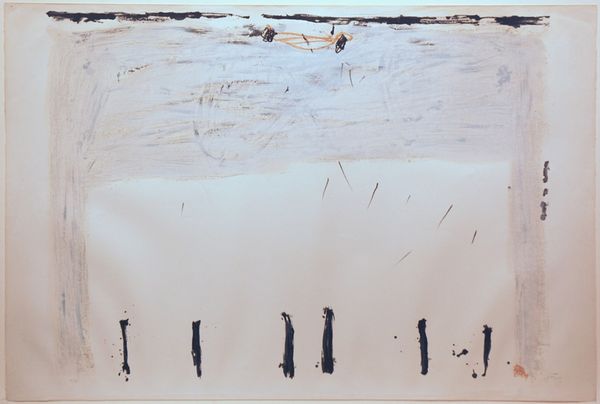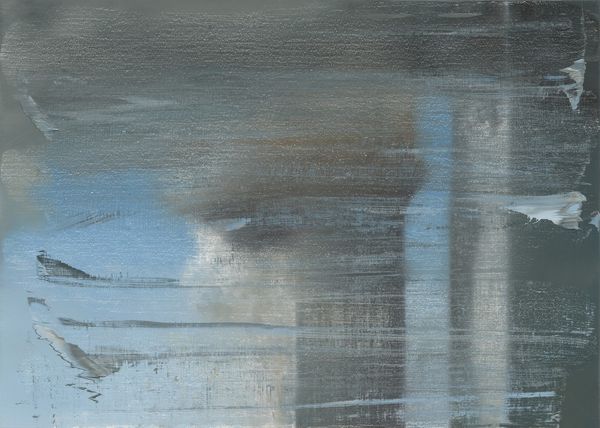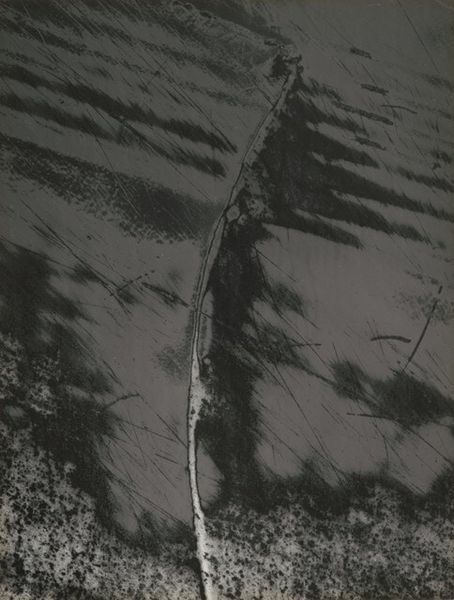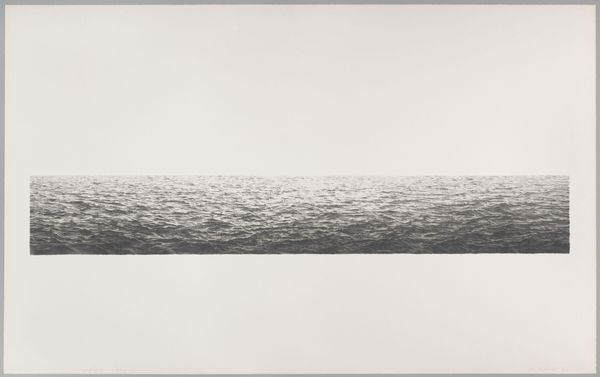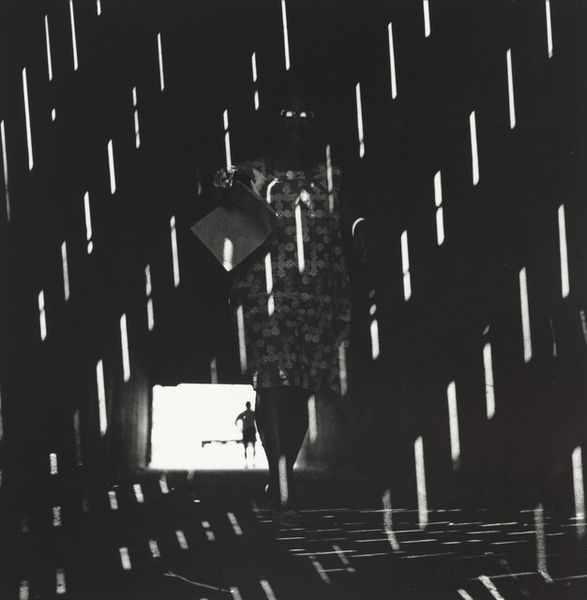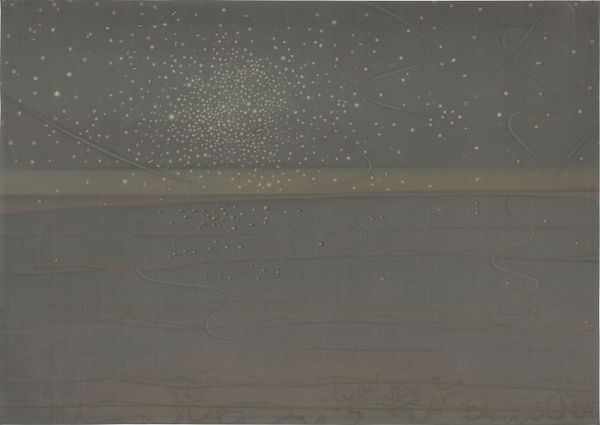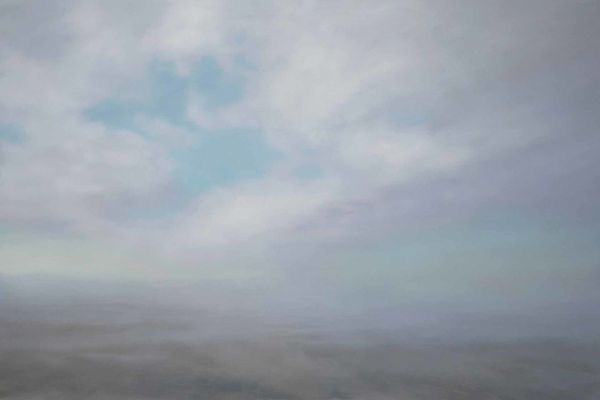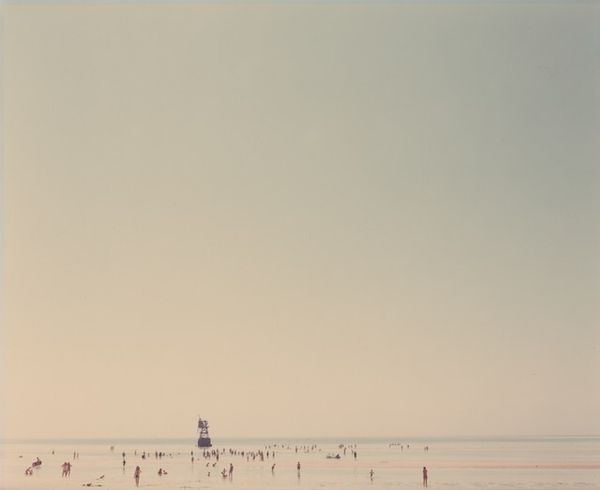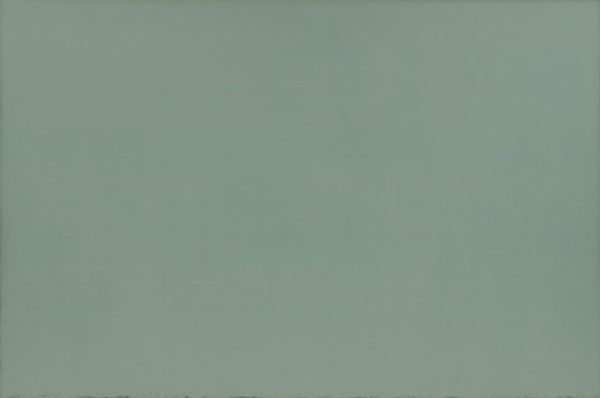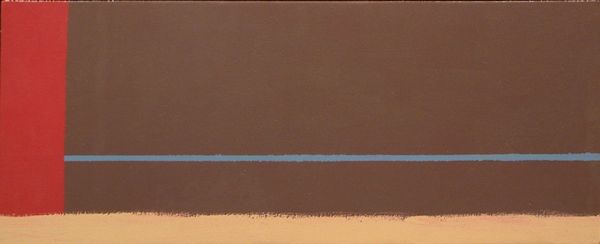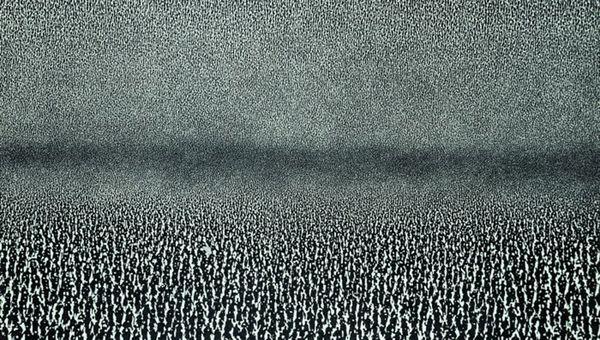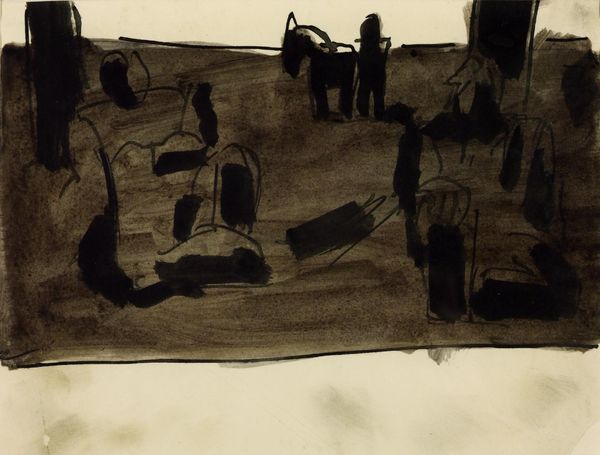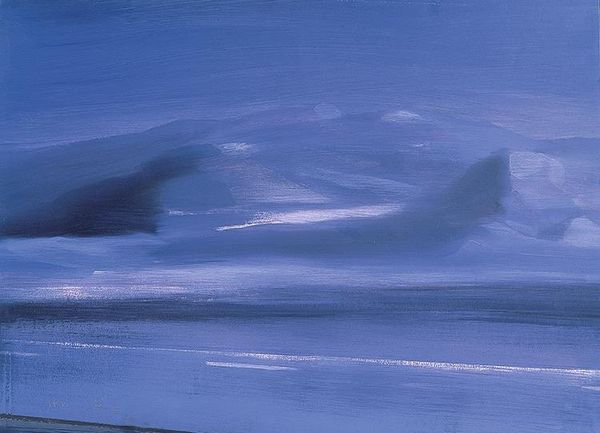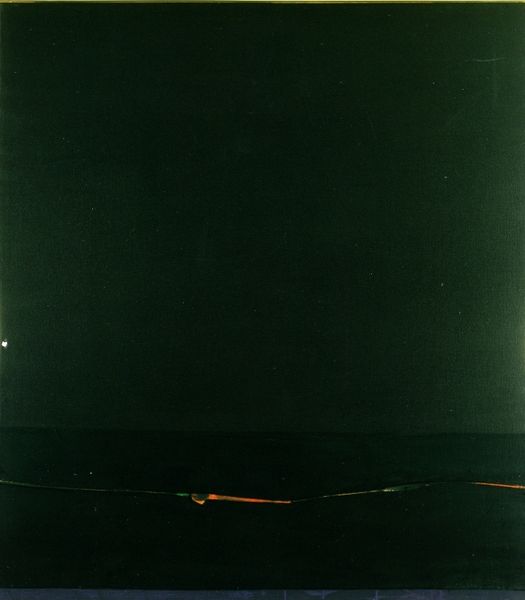
Dimensions: support: 241 x 299 mm
Copyright: © Wilhelm Sasnal, courtesy Sadie Coles HQ | CC-BY-NC-ND 4.0 DEED, Photo: Tate
Curator: Wilhelm Sasnal's "Untitled (a)" presents us with a stark, almost desolate scene in oil on canvas. I find the composition quite unsettling. Editor: The near-monochromatic palette emphasizes the flatness of the plane. The brushstrokes are visible, suggesting a rapid application of paint, and the subdued tones really set a somber mood. Curator: Absolutely. Consider the social context: Sasnal’s work often grapples with the weight of history in post-communist Poland, so this could reference collective memory. The figures seem isolated, perhaps alluding to alienation in contemporary society. Editor: Or, stripped of context, the repetition of shapes creates a formal rhythm. The contrasting values—the black figures against the grey ground—establish a visual tension. Curator: A tension that speaks to the human condition, perhaps. It’s a fascinating piece that allows for multiple interpretations. Editor: Indeed. It leaves you pondering form and content long after you’ve moved on.
Comments
Join the conversation
Join millions of artists and users on Artera today and experience the ultimate creative platform.
tate 3 months ago
⋮
Sasnal is a contemporary Polish artist who has gained international recognition for his depictions of day-to-day life in a society in transition to a market-based economy. He has worked in different media including drawing, film and photography but he is best known as a painter. He is highly prolific, having produced several hundred paintings in a diverse range of styles in the first five years of the twenty-first century. His early work was often directly representational with images sourced from photographs and consumer products. Many of these paintings incorporated text: dates, price tags and other units of measurement. This work has been read as a contemporary updating and as a subversion of a Pop Art sensibility, but from an Eastern European perspective.
